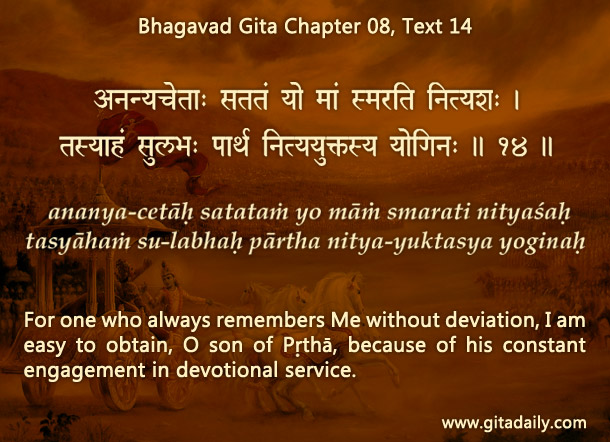The world we live in is a broken place. No matter how hard we work and how well we plan, even the best work that we do will be undone. Even our happiest dreams, if actualized, will not endure – we will be subjected inexorably to the distresses of old age, disease and death. The Bhagavad-gita (13.09) encourages the hard-eyed realism necessary to acknowledge the world’s brokenness – it declares such unsentimental perception as a characteristic of knowledge.
Yet the Gita doesn’t imply that because we live in a broken world, we all have to necessarily lead broken lives. This positive focus is evident in the verse (08.14) that is often quoted to talk about this world’s ephemerality and misery, but whose stress is on assuring us that the practice of bhakti can enable us to transcend this world and attain Krishna’s eternal abode.
The more we direct our consciousness inwards towards our spiritual essence and upwards towards Krishna, the source of matter and spirit, the more we experience relief from outer miseries and the more we relish inner joy in our connectedness with our spiritual side. By realizing and relishing our spiritual side and the unlimited joy coming from spiritual love for Krishna, we all can find healing even while living in this broken world.
The stress of the Gita is not on passively accepting the brokenness of this world, but on actively addressing the cause of its brokenness: our own broken status, our disconnectedness from Krishna, the whole whose parts we are eternally. By practicing bhakti-yoga, we rectify our brokenness, for we connect with Krishna. And the more we live in the light and the strength coming from that divine connection, the more we can find wholeness and richness even amidst the world’s brokenness.
To know more about this verse, please click on the image

Explanation of article:
https://www.youtube.com/edit?video_id=_7zKyNrsrH0&video_referrer=watch

Leave A Comment